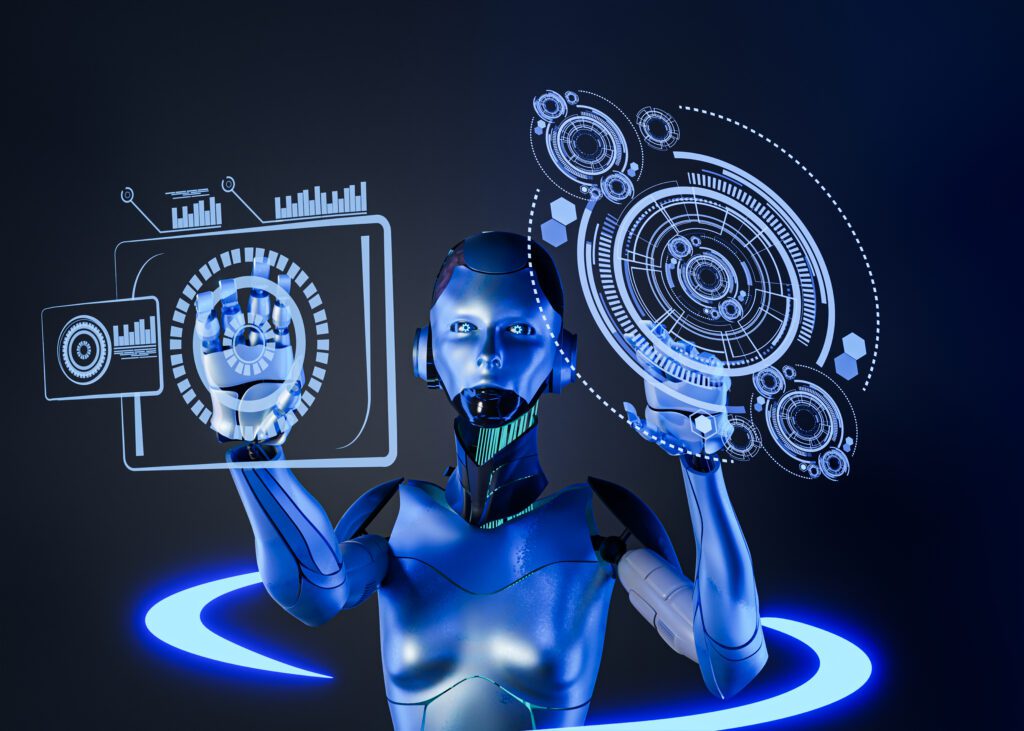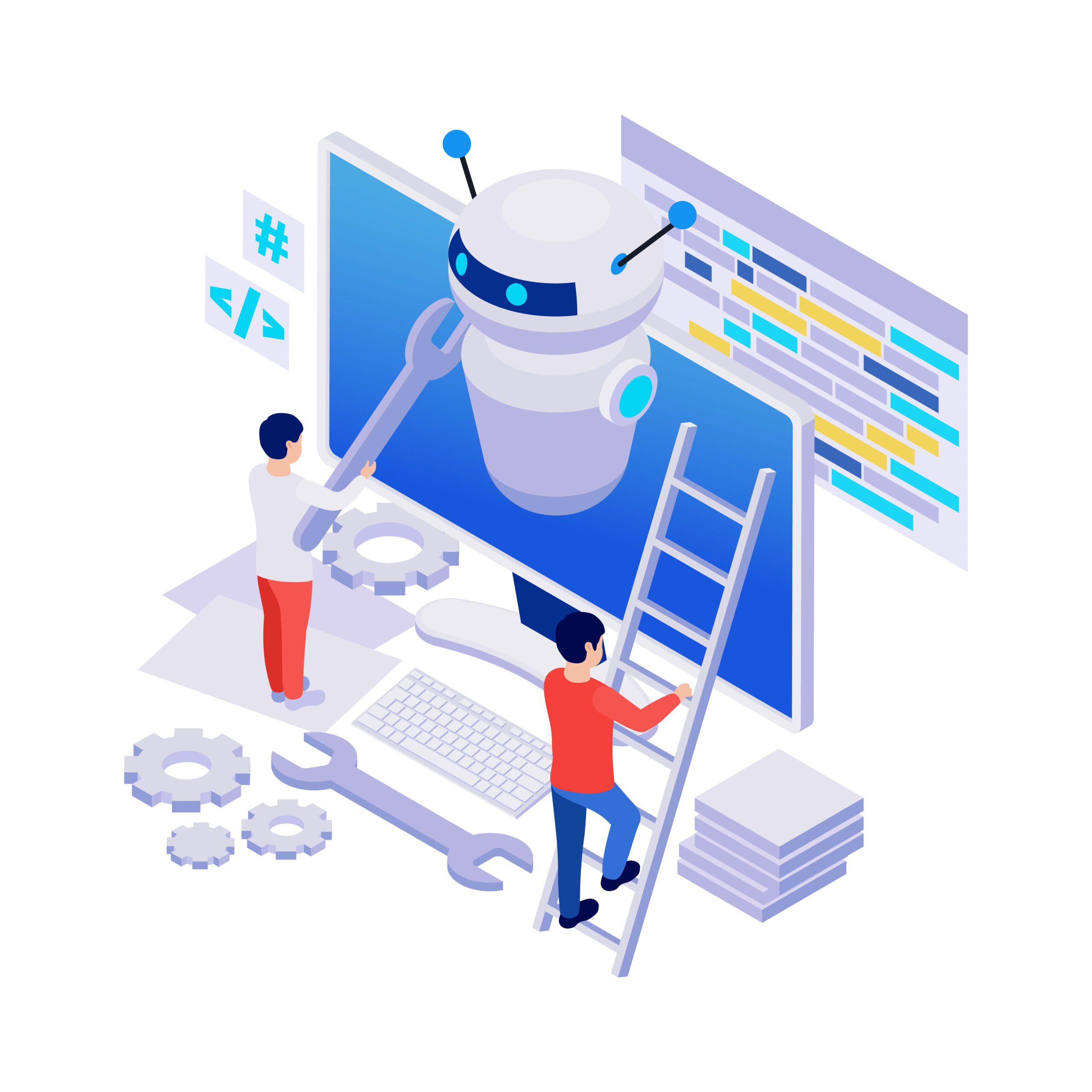I. INTRODUCTION
In today’s dynamic and technology-driven world, the role of artificial intelligence (AI) has transcended from being a futuristic concept to an integral component of various industries. As businesses seek innovative ways to enhance efficiency, make informed decisions, and deliver exceptional customer experiences, the significance of AI tools and platforms cannot be overstated. In this article, we will explore the essential AI tools and platforms that are paving the way for success in the ever-evolving landscape.
Table of Contents

II. What is the AI Tool and Platform?
AI Tool:
An AI tool refers to a software application or program that incorporates artificial intelligence techniques to perform specific tasks or functions. These tools leverage machine learning algorithms, data analysis, and automation to execute tasks that typically require human intelligence. AI tools are designed to enhance efficiency, accuracy, and decision-making across various domains, from business processes to creative content generation.
AI Platform:
An AI platform is a comprehensive environment that provides tools, resources, and frameworks to develop, deploy, and manage artificial intelligence applications. These platforms offer a centralized space for data storage, model training, testing, and integration into existing systems. AI platforms cater to developers, data scientists, and businesses seeking to build AI-driven solutions without starting from scratch. They often include features like machine learning libraries, data preprocessing tools, and deployment capabilities.
In essence, AI tools are individual software components that perform AI-related tasks, while AI platforms offer a broader ecosystem to develop and manage AI applications efficiently. Both AI tools and platforms play a crucial role in advancing the capabilities of artificial intelligence across industries and applications.
III. Importance of AI Tools and Platforms
1. Efficiency and Automation:
AI tools and platforms automate routine tasks, freeing up human resources to focus on more strategic and creative endeavors. Automation reduces errors, accelerates processes, and ensures consistent performance, leading to increased operational efficiency.
2. Data Analysis and Insights
AI tools process vast amounts of data quickly and extract valuable insights that humans might overlook. These insights drive data-driven decision-making, allowing businesses to identify trends, customer preferences, and market opportunities.
3. Personalization and Customer Experience:
AI tools enable personalized experiences by analyzing customer data and behavior. This leads to tailored recommendations, content, and interactions, enhancing customer satisfaction and loyalty.
4. Innovation and Problem Solving:
AI tools encourage innovation by enabling businesses to tackle complex challenges with data-driven solutions. They can identify patterns and relationships in data that inspire new ideas and approaches.
5. Time and Cost Savings:
Automation through AI tools and platforms reduces manual effort and associated costs. Repetitive tasks that consume time can be automated, allowing employees to focus on higher-value tasks.
6. Scalability and Consistency:
AI tools and platforms can handle large-scale data processing and analysis consistently without getting fatigued. This scalability ensures that businesses can manage growth and demand effectively.
7. Enhanced Decision-Making:
AI tools provide insights that aid decision-makers in making informed choices. These tools consider a broader range of data, leading to more accurate predictions and better decisions.
8. Competitive Advantage:
Organizations that embrace AI tools and platforms gain a competitive edge by leveraging advanced technologies to innovate, optimize processes, and deliver superior customer experiences.
9. Complex Task Handling:
AI tools excel at handling complex tasks that involve vast datasets and intricate calculations, such as financial analysis, medical diagnosis, and scientific research.
10. Continuous Learning and Improvement:
Many AI tools are designed to learn from new data and improve their performance over time. This ability to adapt and refine processes is crucial for staying relevant and efficient in dynamic environments.
11. Accessibility and Democratization of AI:
AI platforms make AI technologies accessible to a broader audience, including those without extensive technical backgrounds. This democratization enables a wider range of individuals to harness AI’s potential.
In summary, AI tools and platforms revolutionize various aspects of business and technology. They empower organizations to streamline processes, make smarter decisions, and create more personalized and efficient experiences for customers. By embracing AI tools and platforms, businesses position themselves for growth, innovation, and success in the rapidly evolving digital landscape.
IV. AI TOOLS and PLATFORMS list:-
Certainly, here are 15 different AI tools and platforms available:

1. TensorFlow
TensorFlow is an open-source AI system created by Google.It allows developers and researchers to build and train various AI models, including neural networks, for tasks like image and speech recognition, natural language processing, and more.
2. PyTorch:
PyTorch is another popular open-source machine learning framework that’s widely used by researchers and developers. It’s known for its dynamic computation graph and is particularly favored for its ease of use in building and training neural networks.
3. IBM Watson:
IBM Watson is an AI platform that offers a suite of tools and services for businesses to build, deploy, and manage AI-powered applications. It includes natural language processing, computer vision, and data analysis capabilities.
4. Microsoft Azure AI:
Azure AI is Microsoft’s cloud-based AI platform. It provides a range of tools and services for building, training, and deploying AI models. It supports various AI capabilities like speech recognition, language understanding, and more.
5. Google Cloud AI:
Google Cloud AI offers a set of AI tools and services on Google Cloud Platform. It includes machine learning APIs, pre-trained models, and infrastructure for building and deploying AI applications.
6. Amazon AWS AI:
Amazon Web Services (AWS) offers a suite of AI services, including Amazon SageMaker for building, training, and deploying machine learning models, as well as services for computer vision, natural language processing, and more.
7. H2O.ai:
H2O.ai provides an open-source platform for building and deploying machine learning models. It’s known for its AutoML capabilities, which automate the machine learning model selection and tuning process.
8. UiPath:
UiPath is a robotic process automation (RPA) platform that uses AI to automate repetitive and rule-based tasks. It helps businesses streamline workflows and increase efficiency.
9. Salesforce Einstein:
Salesforce Einstein is an AI-powered platform that integrates AI capabilities into Salesforce’s customer relationship management (CRM) software. It provides insights, predictions, and recommendations to enhance sales and marketing efforts.
10. OpenAI GPT-3:
OpenAI’s GPT-3 is a strong language model that can create human-like text.It’s used for tasks like natural language understanding, text generation, chatbots, and more.
11. AutoML:
AutoML platforms, such as Google AutoML and Azure AutoML, automate the process of building machine learning models, making AI accessible to non-experts.
12. Rasa:
Rasa is an open-source platform for building AI-powered chatbots and conversational interfaces, allowing developers to create interactive and context-aware conversations.
13. Tableau:
Tableau offers data visualization and analytics tools with AI-powered features that help users understand data insights more effectively.
14.DataRobot:
DataRobot is a man-made intelligence stage that robotizes the start to finish cycle of building, sending, and overseeing AI models.
15.NVIDIA CUDA:
NVIDIA CUDA is a parallel computing platform and API that enables developers to use NVIDIA GPUs for accelerating AI and deep learning computations.
These tools and platforms cover a wide range of AI applications, from machine learning and natural language processing to chatbot development and data analysis. Each platform has its strengths and is suited for various AI-related tasks. These are just a few examples of the many AI tools and platforms available today.
V. Overview of the Title Explanation

The Force of man-made intelligence Devices: Upgrading Effectiveness and Advancement
AI tools have revolutionized how we approach tasks and processes across industries. Machine learning libraries like TensorFlow and PyTorch enable developers to build and train complex models for a range of applications, from image recognition to language translation. These tools streamline development and empower businesses to deliver cutting-edge solutions faster than ever before.
Unleashing Creativity with AI Platforms
AI platforms provide an ecosystem for businesses to harness AI’s potential without requiring in-depth technical expertise. Platforms like IBM Watson, Microsoft Azure AI, and Amazon SageMaker offer a suite of tools and services for building, deploying, and managing AI applications. These platforms democratize AI, making it accessible to a wider audience and enabling businesses to innovate and experiment with AI-driven solutions.
From Data Insights to Customer Delight
Data analysis is at the core of AI’s transformative capabilities. AI platforms equipped with data analysis tools enable organizations to glean insights from vast datasets, driving data-driven decision-making. Salesforce Einstein and Tableau, for example, empower businesses to analyze customer data and visualize trends, leading to personalized marketing strategies and improved customer experiences.
The Conversational Revolution: Chatbots and Virtual Assistants
Conversational interfaces powered by AI are reshaping customer interactions. Dialogflow and Rasa are tools that facilitate the creation of intelligent chatbots and virtual assistants. These AI tools enhance customer support, provide instant responses, and offer tailored solutions, elevating customer satisfaction and engagement.
AI’s Predictive Prowess: Shaping Strategies
Predictive analytics, fueled by AI, empowers businesses to anticipate future trends and plan strategies accordingly. AI platforms equipped with predictive analytics capabilities help identify emerging opportunities and potential challenges. By leveraging AI insights, businesses can make proactive decisions, gain a competitive edge, and capitalize on untapped markets.
Conclusion: Embarking on a Transformative Journey
As we navigate the future, embracing AI tools and platforms is no longer an option—it’s a necessity. These tools and platforms empower businesses to innovate, optimize processes, and deliver exceptional experiences to customers. From automating tasks to predicting trends, AI’s transformative potential is redefining success across industries. By staying abreast of essential AI tools and platforms, businesses can confidently navigate the future, unlock new opportunities, and position themselves at the forefront of technological advancement.
FAQ’s
1.What is an example of AI tool?
An AI tool example is “Grammarly,” which helps improve writing by suggesting grammar, spelling, and style improvements in real-time.
2. Which is the best AI tool?
Determining the “best” AI tool depends on specific needs and tasks. Popular options include TensorFlow, PyTorch, IBM Watson, and Microsoft Azure AI.
3.Why use AI tools?
Using AI tools offers numerous benefits, including automating tasks, analyzing data for insights, enhancing efficiency, personalizing experiences, and making informed decisions, leading to improved productivity, cost savings, innovation, and competitive advantage.
4. How many types of AI tools are there?
AI tools can be categorized into types such as machine learning, natural language processing, data analysis, automation, chatbot development, recommendation systems, image analysis, virtual assistants, AutoML, predictive analytics, and RPA.
5. What is the full form of AI tools?
The full form of “AI tools” is “Artificial Intelligence tools.”

Hi there, I just came across your new site and saw that you’re getting started with WordPress – something I’m well experienced in! It’s always thrilling to see how new websites unfold. Building a website is not always a simple task – are you doing this on your own or do you have a developer to help you out? Regardless, I can’t wait to see how your site progresses. If you ever need to discuss anything WordPress-related, feel free to drop me an email at contact@ghazni.me, or message me on WhatsApp.
Kind regards,
Mahmud Ghazni
WordPress Expert
WhatsApp: +880 1322-311024
Hello Sir,
As you said i’m a starter to create blogs. I’m doing on my own with the help of youtube videos…i can contact you but,i dont to invest anymore for any guidance..please if you find any errors in my blog means let me know if possible..otherwise i’ll only find it out…